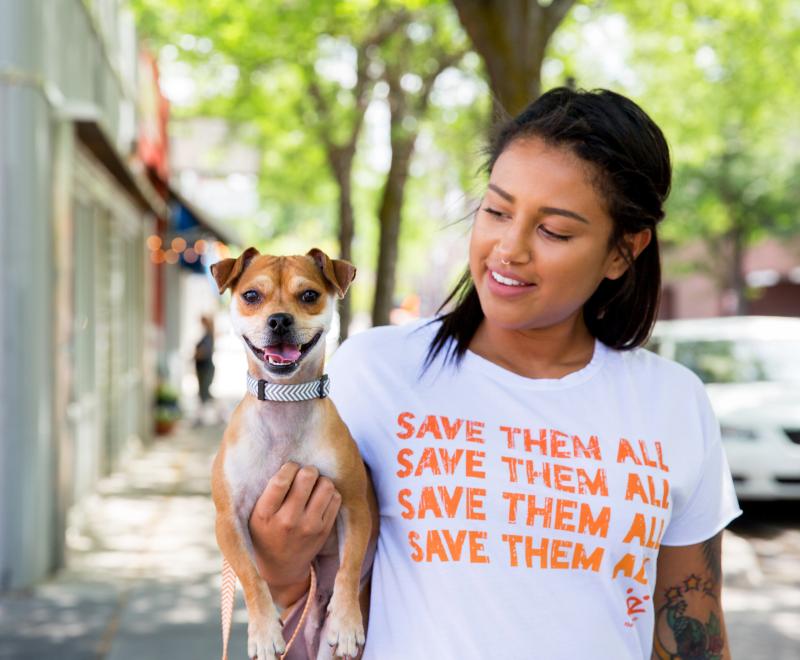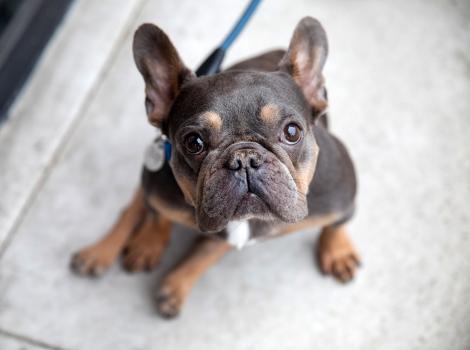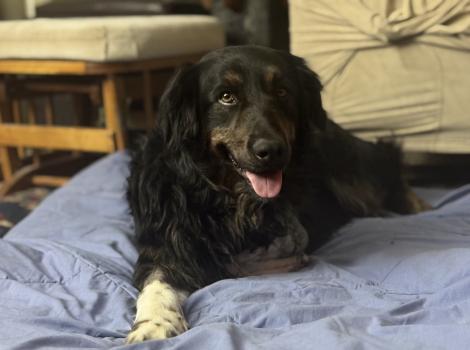Save rate skyrockets at a West Virginia animal shelter

Longtime buddies Winston and Watson were hanging on for dear life.
Weak and emaciated, the two doodle-type pups landed at Harrison County Animal Control Services in Shinnston, West Virginia (pop. 2,289). After far too long without enough food and in need of veterinary care, “the boys” didn’t know it yet, but their luck was about to change.
Last March, a meeting between Harrison County’s new shelter manager and Best Friends started the shelter on a pathway to success, making it much more likely that Winston and Watson’s landing spot was the right one. That success included a skyrocketing save rate that reached 83% in the first half of 2024, compared to a rate that hovered around 38% in 2023. (Save rate is the percentage of animals entering a shelter who are not killed.)
[Changes to rescue, adoption practices save more animals]
Kassy Slack was just three months into her new role as director of animal control services when she first met with Tierney Sain, Best Friends regional strategist. Working with animal shelters on programs that give more pets second chances is one of the one of the many ways Best Friends is helping shelters reach no-kill in 2025.
“I was ready for some help because the whole point of me taking this job initially was to make change,” Kassy says. “But at the time I felt like I was talking to people in the community, but I wasn’t sure if they were really listening. Tierney taught us that the whole goal is to be patient in sharing our knowledge so people can begin to think differently about the shelter.”

A new start for Harrison County animal shelter
With Best Friends providing funding for adoption fees and vaccines, and donating microchips and animal handling supplies, Kassy and her staff for the first time had the tools to proactively provide services to the community. And inside the shelter, Best Friends worked with the staff to make the shelter a better place for the animals by teaching improved cleaning protocols, how to provide more enrichment for the animals, and techniques on safe animal handling.
Still, despite all the positive changes, Harrison County would be hard-pressed to provide Winston and Watson with the medical care they needed. Fortunately, Kassy was already taking advantage of new relationships with outside organizations who could help in such situations. So, when she contacted Katie Short of Animal Friends of North Central West Virginia to see if she could take Winston and Watson, the answer was yes.
“We took them to our shelter but only had them there for a half hour before taking them to the vet,” says Katie. “They had digestive issues, nausea, and were extremely malnourished. Our biggest immediate issue was getting their digestive systems back in shape.”

Working with the community
Back at the Harrison County shelter, the staff are serving pets and people with new programs. Kassy and animal control officers are working with the public to discourage bringing in free-roaming cats and, instead, allowing the cats to stay where they are already thriving, and working with residents to solve complaints. This includes providing safe, humane deterrents people can use if they want to keep cats away from their properties. Establishing a fully functioning community cat program is part of the planning for 2025.
In late spring, a large crowd showed up for the shelter’s first vaccine-microchipping event that also included $4 adoptions. “Since that event in May, it’s been a complete turnaround for us,” says Kassy. “We’ve gained a lot of respect from the public.”
County animal control officers are working with residents in a more understanding way when it comes to pets running loose. Rather than just issuing a citation when an animal is picked up, officers try to get the animal home without going to the shelter.
[A well-rounded approach to saving more dogs and cats]
“It’s a mindset change,” says Kassy. “We speak to families and ask them if this is the first time their dog got out. We try to give them a little bit of a break and help them find a solution, instead of automatically making them pay a reclaim fee.”
During the summer, the shelter established a pet food pantry to help families who might be feeling the financial pinch to feed their pets. Since the first request for pantry donations went out, the shelter has received more than 500 pounds of donated pet food. “If we get a call from someone who says they’ve seen a pet who looks a little lean, we might go out and visit that family and maybe give them a little bit of food to tide them over until they get paid,” says Kassy.
“The pet pantry and animal control officer resources are a great step forward to working with the community,” says Tammy Jo Hallman, a member of the Best Friends national shelter support team who’s also been working in Harrison County. “But overall, they’ve done a complete turnabout to where they are working with the community. And despite being in an area that is experiencing a 14% unemployment rate, much higher than the national average, they’re doing a great job planning and advocating for community resources that can only make the shelter better.”

New lives in a new home
It took about a month for Winston and Watson to feel better, but one look at them reveals the two handsome dudes are in fine form. That’s exactly how a couple from the eastern part of the state saw them on Facebook. “They made the two-hour drive on a Friday, spent the weekend, and took the boys home on Sunday,” says Katie. “We couldn’t be happier for them. We are getting good updates, and they are doing great.”
And despite an inoperable mass discovered on Winston’s neck, the two “brothers” are happy together in their new home — especially Winston. “He’s considered hospice, but you’d never know it because he’s the more outgoing of the two,” says Katie.
No two dogs could be more deserving of all the love and affection being doled out in their direction than Winston and Watson. And though the boys’ time in each other’s company may be limited (months or years, the vets say), they’re living life to the fullest.

Bright future for Harrison County
Harrison County’s less-than-2,000-square-foot building will be replaced next year by a new, $4 million, 8,000-square-foot facility with 32 dog runs. Best Friends will be continuing to provide support in 2025, and an entire strategy plan has been put in place that mostly focuses on helping residents keep their pets.
“We’re on track to save about 800 more animals in 2024 than in 2023,” Kassy says. “And next year we will continue expanding our work with great rescue organizations in West Virginia, Ohio, and Pennsylvania to save even more.”
Tierney lauds Kassy’s work in her first year on the job. “Since she took the job as director, she’s been open-minded and willing to try things that previously had never been done at Harrison County,” Tierney says. “It’s that positive change that really has the momentum going. She’s an incredible leader to her team. I don’t want to speak too soon but based on everything Harrison County has accomplished this year, it’s going to do nothing but grow in 2025.”

Let's make every shelter and every community no-kill in 2025
Our goal at Best Friends is to support all animal shelters in the U.S. in reaching no-kill in 2025. No-kill means saving every dog and cat in a shelter who can be saved, accounting for community safety and good quality of life for pets.
Shelter staff can’t do it alone. Saving animals in shelters is everyone’s responsibility, and it takes support and participation from the community. No-kill is possible when we work together thoughtfully, honestly, and collaboratively.






